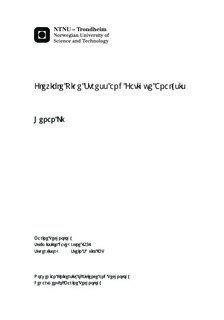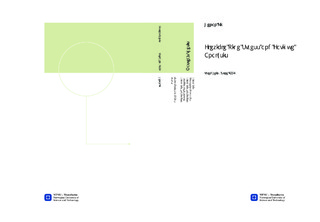| dc.description.abstract | Fatigue is an important character for the flexible pipes as they are always exposed to dynamic loading. For nonbonded flexible pipes, fatigue and stress analysis can be performed based on different assumptions of slip behaviour. Different slip assumptions used in estimating the slip stress always play a determinative role in the prediction of fatigue damage. Thus, this thesis will focus on the study of the slip behaviour between tensile armour layers of nonbonded flexible pipes. The results can be used to support the basic assumptions for further fatigue analysis. The main object of this thesis is to summarize the existing analytical methods for stress and slip analysis of nonbonded flexible pipe armouring layers and to verify that the improved finite element models can give adequate description of the flexible pipe slip behaviour.In previous version of BFLEX, the transverse slip effect for nonbonded flexible pipes has been neglected. In this thesis, transverse slip regime has been activated in the updated BFLEX by developing a new type of beam element hshear353 and a new type of contact element hcont453. Finite element models use these two elements have been made and several case studies have been carried out.For axisymmetric loading, two analytical solutions, one obtained from the equations by Witz&Tan[13], one from Sævik[2] have been compared with the result from numerical simulation. It has been found that Sævik s solution matches better with the BFLEX solution comparing to Witz&Tan s solution. For flexible pipes exposed to bending, influences on slip behaviour from several pipe parameters, namely friction coefficient, axial strain and global pipe curvature, have been investigated. The numerical results are also compared with analytical solutions obtained from Sævik[2]. It has been found that the numerical solutions can give excellent agreement with analytical solutions. It is further concluded that the outer tensile armour layer do not influence much on the inner layer slip behaviour.In addition, the cyclic bending effects on nonbonded flexible pipes have been investigated. It has been found that the tendon behaves differently from case to case. The inner and outer layers behave differently. Only a few cases have been studied for this problem due to time limitation. The overall conclusion is that the developed BFLEX model is capable of describing the stresses and local displacements of flexible pipe for simple cases. The developed numerical model can further be used in the study of fatigue in flexible risers. However, more studies on influence from multi-tensile layers and cyclic bending are needed in the future. | nb_NO |

